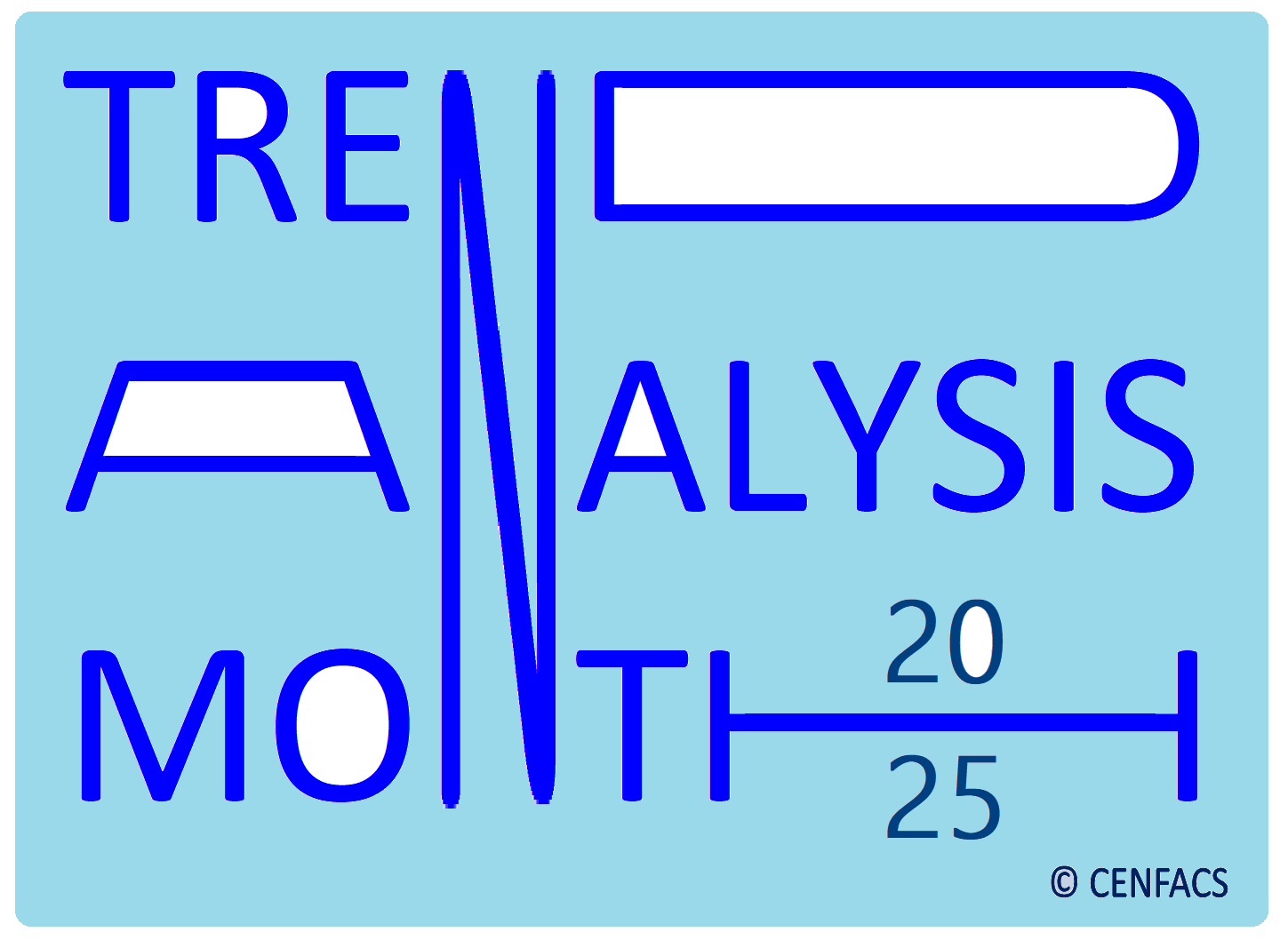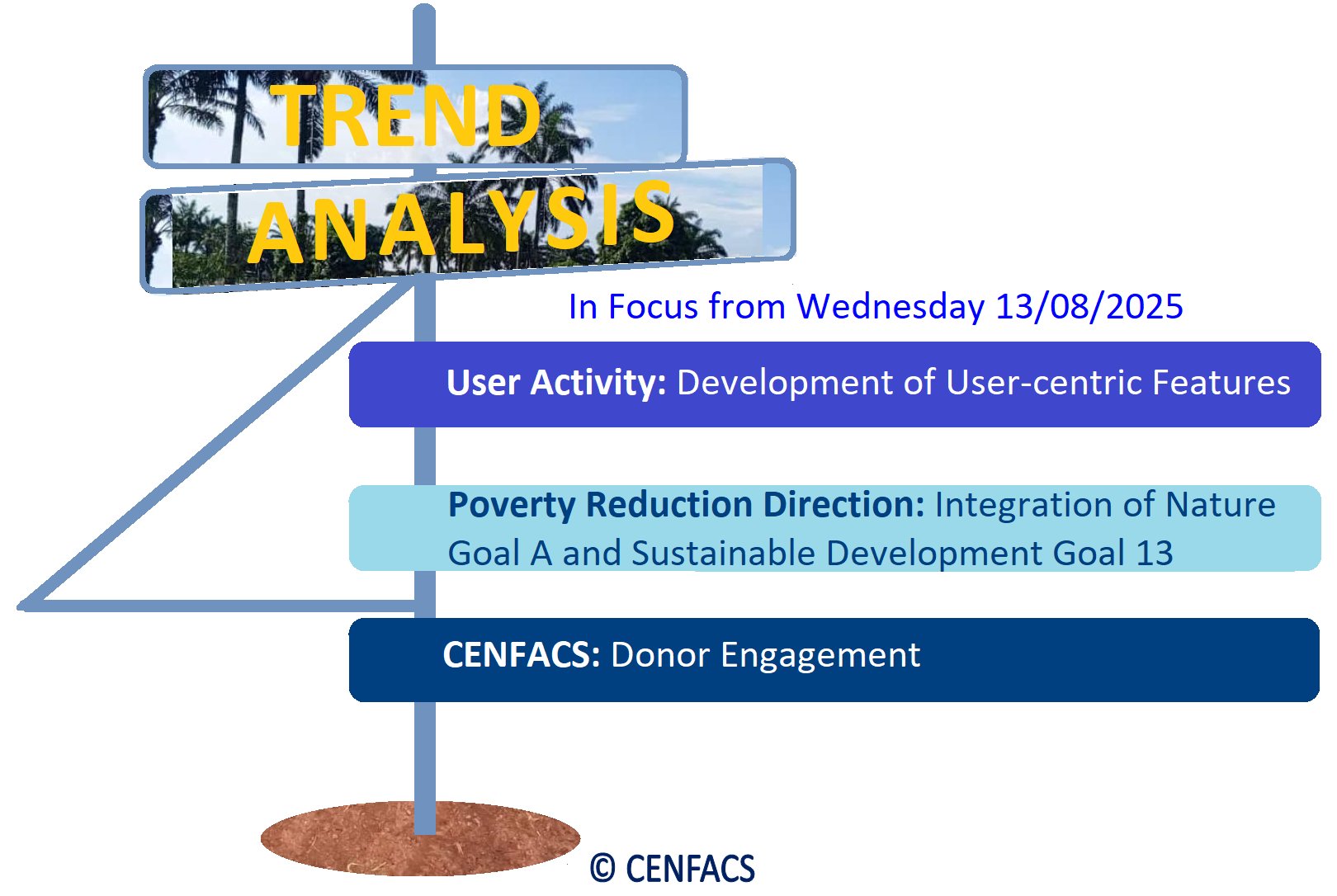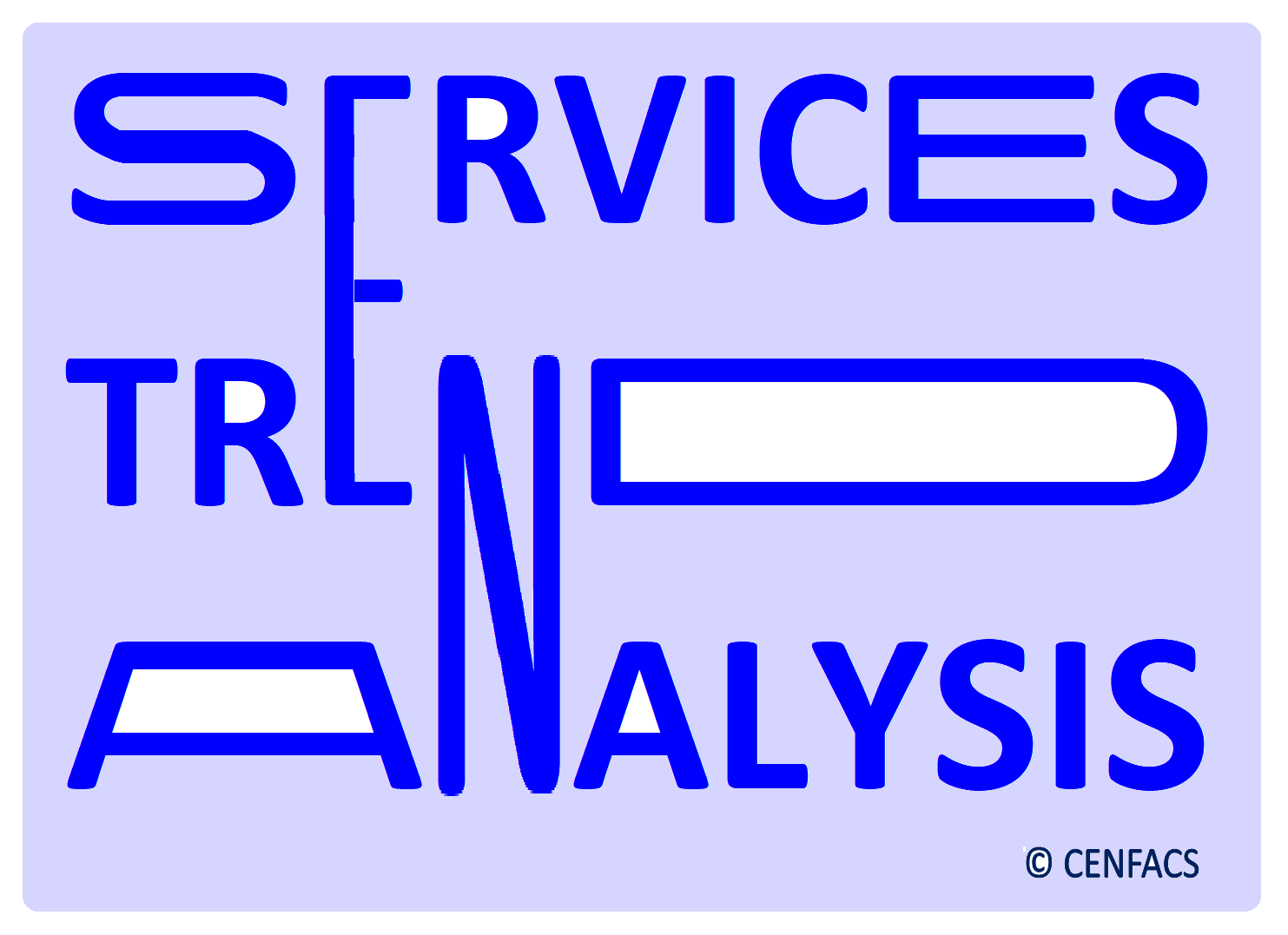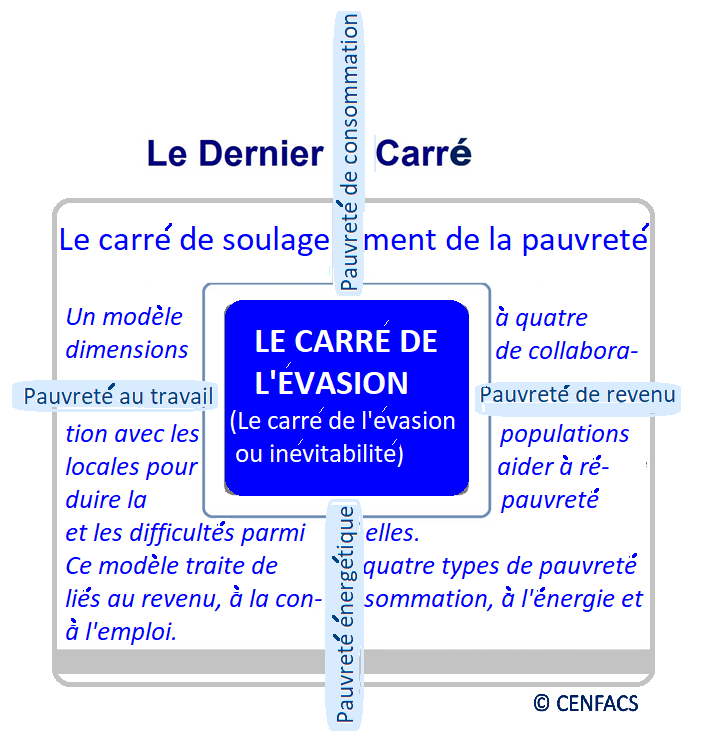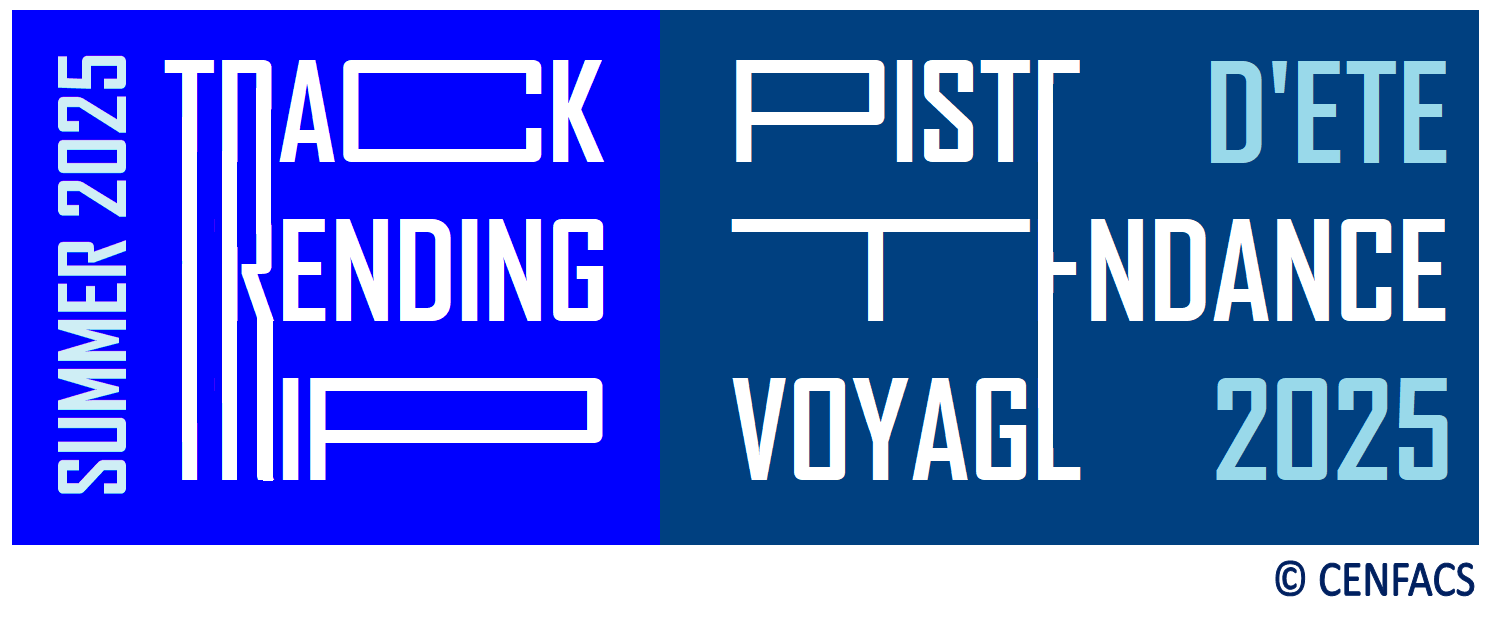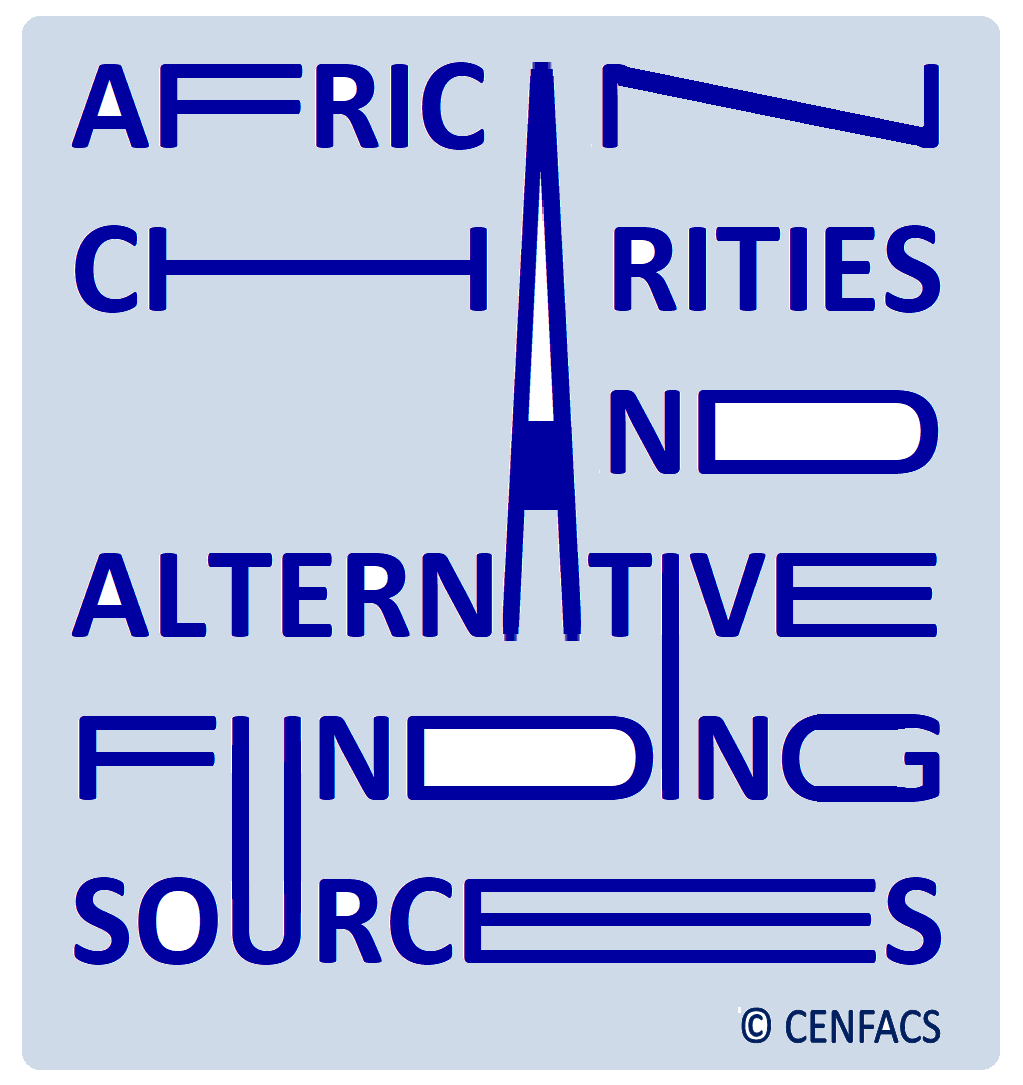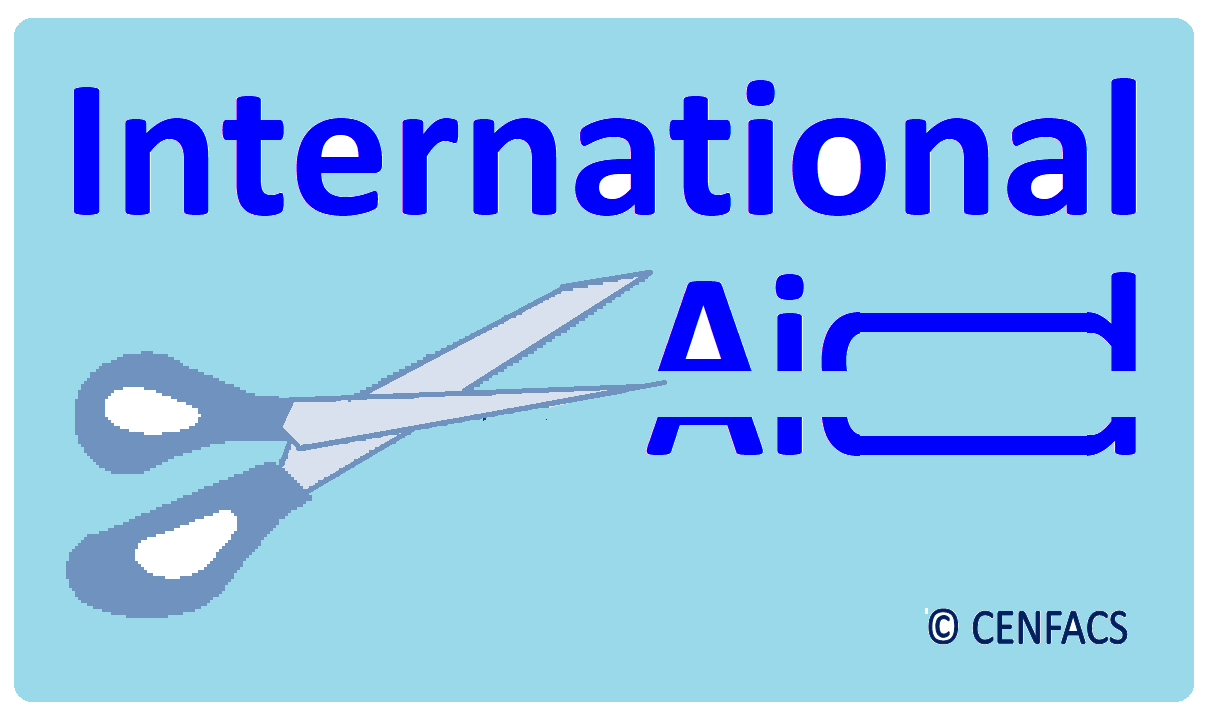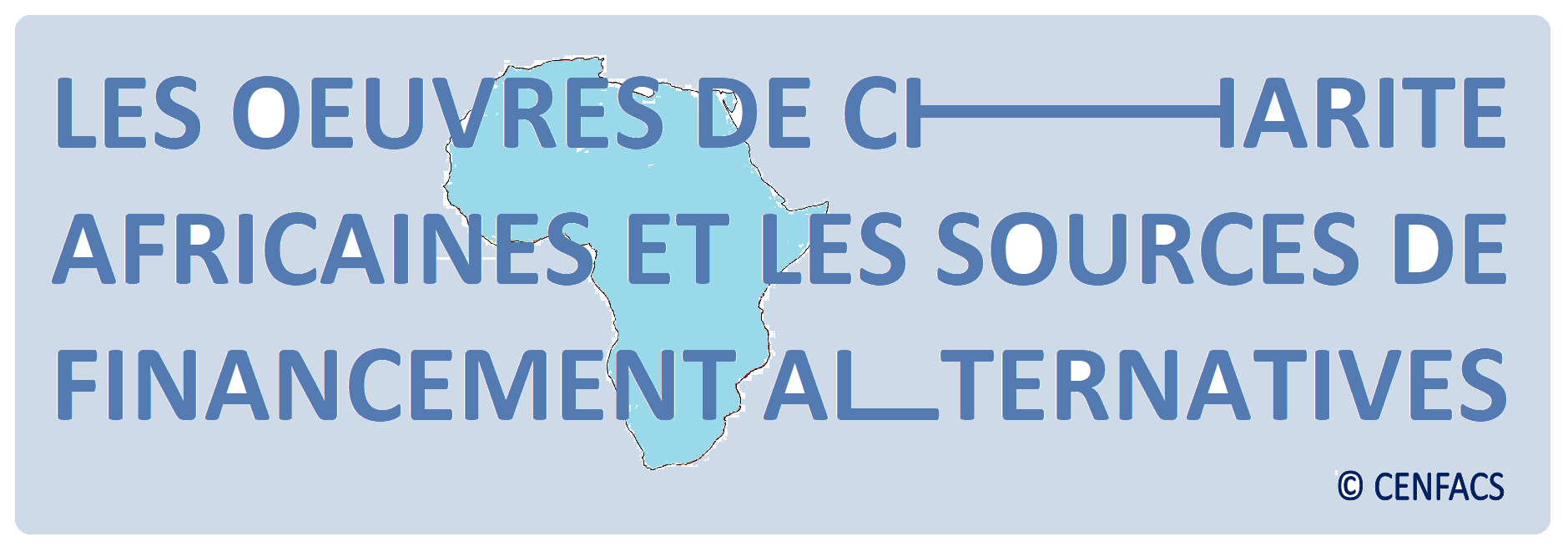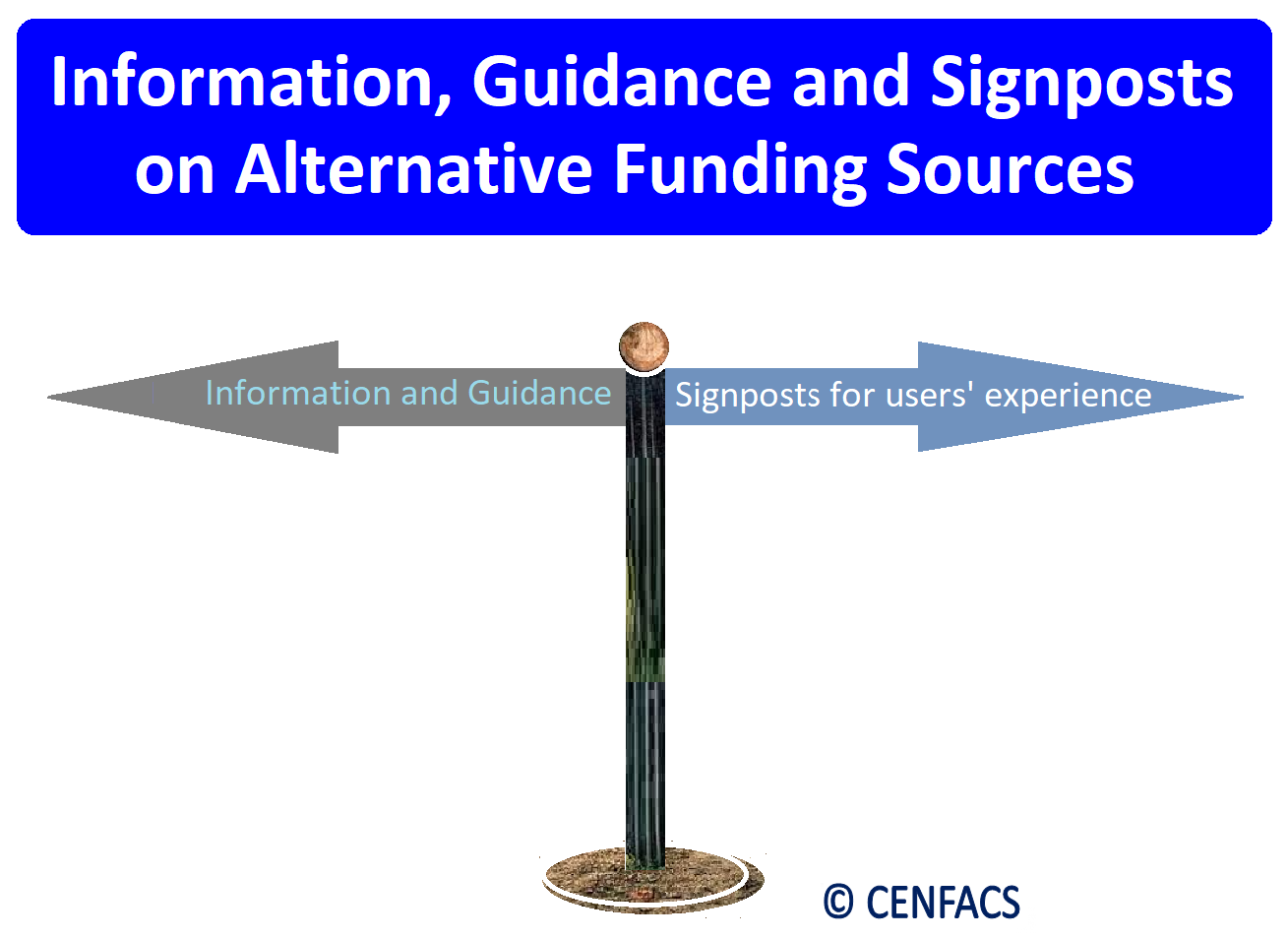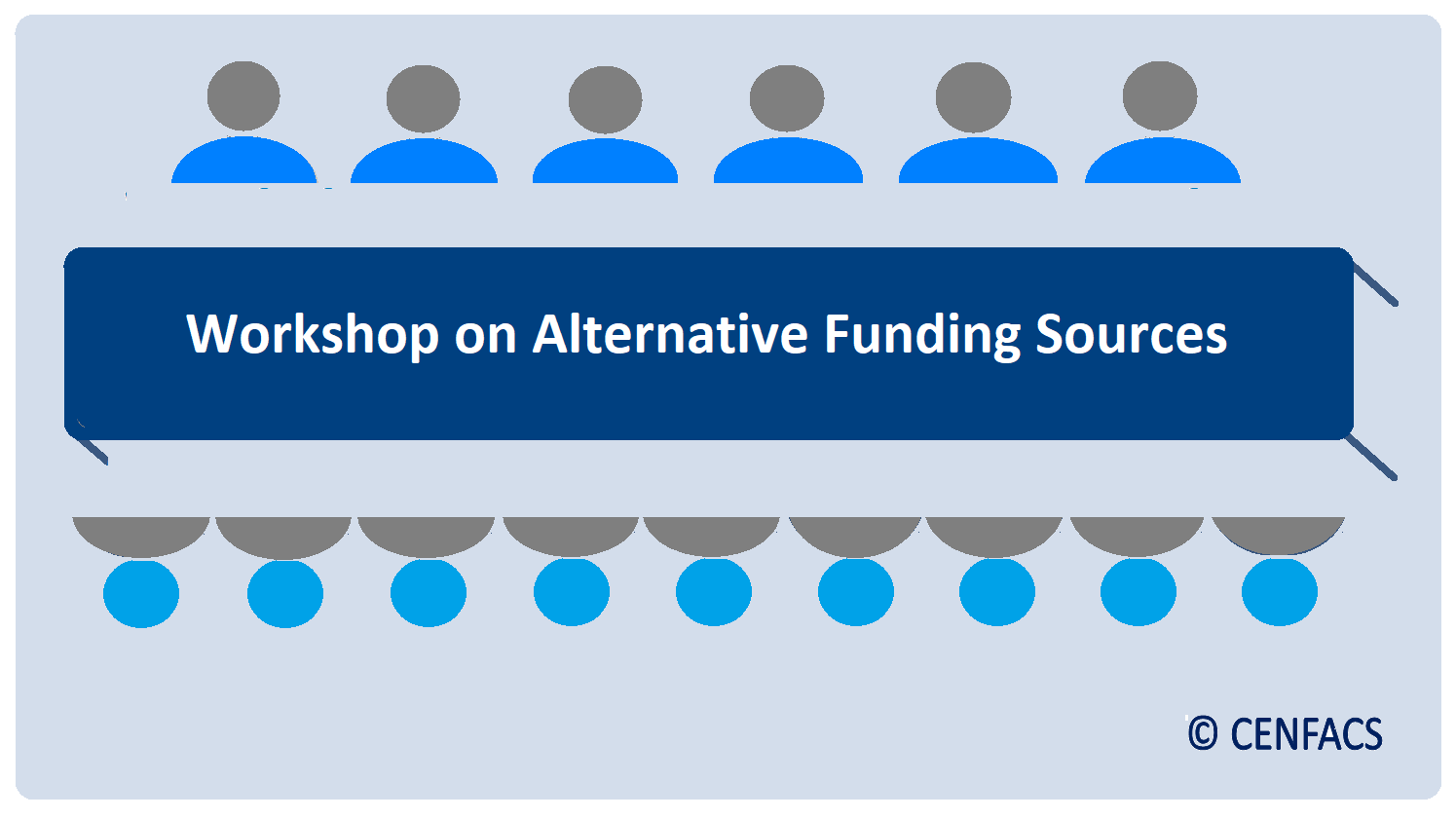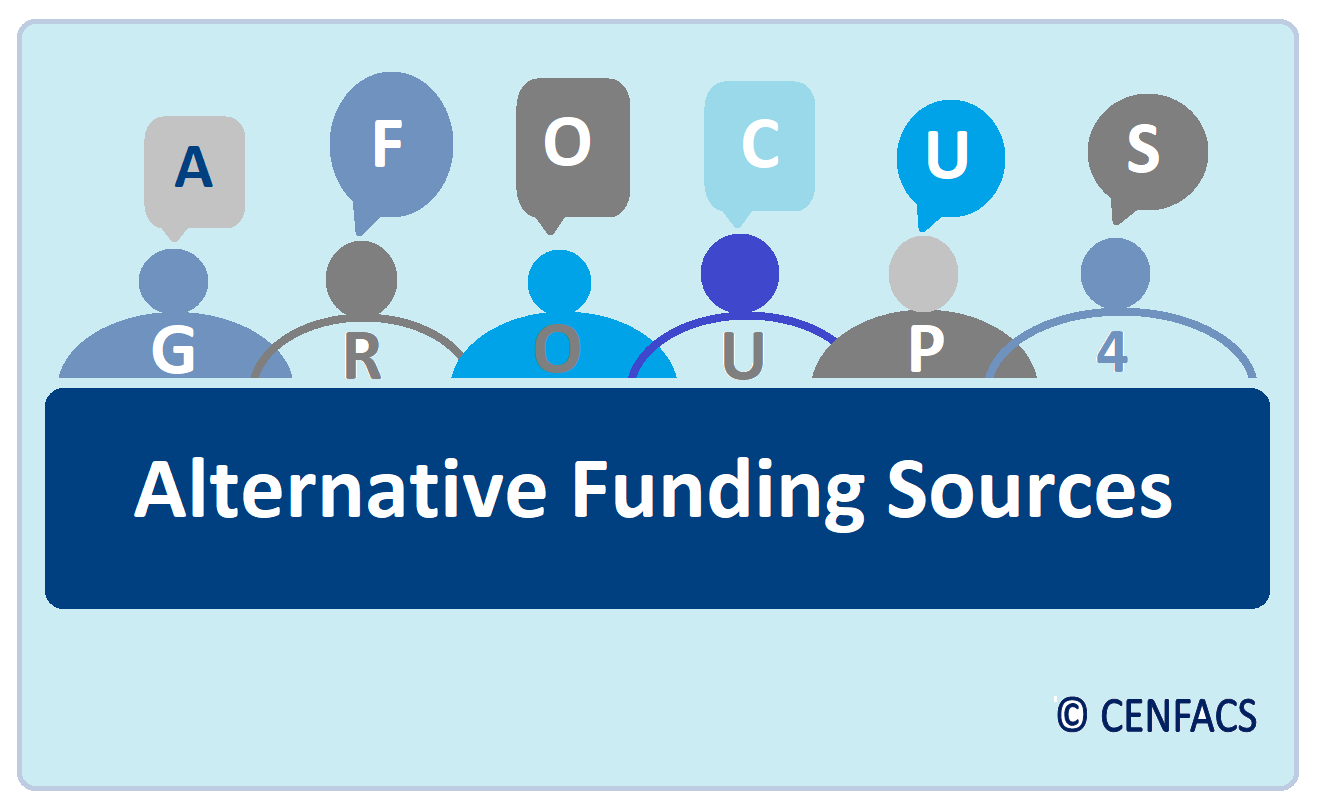Welcome to CENFACS’ Online Diary!
13 August 2025
Post No. 417
The Week’s Contents
• FACS Issue No. 88, Summer 2025: African Charities and Alternative Funding Sources to International Aid Cuts
• Trend Analysis 2025 Activities from 13/08/2025
• Trend Analysis of CENFACS Services
And much more!
Key Messages
• FACS Issue No. 88, Summer 2025: African Charities and Alternative Funding Sources to International Aid Cuts
African Charities can explore alternative funding sources and find new business models to mitigate the impact of the recent international aid cuts and continue to deliver on their mission. They can diversify their funding base through local philanthropy, social impact investments, and diaspora direct investment or contribution to poverty reduction and other types of requests from those in need. They can as well develop self-sustaining social enterprises or set up trading arms if their constitutional objects and status allow them to do so. Additionally, they can check in the African countries where they operate if the governments of these countries have put in place mechanisms to domestically mobilise resources to support good causes like the ones African Charities deal with.
The 88th Issue of FACS is about the above-mentioned alternative funding sources. Alternative funding sources also refer to remaking the business model of African Charities without reinventing the wheel in the context of the new funding development landscape. But, what is an alternative funding source? What is international aid?
Alternative funding sources can be defined in many ways. One of its definitions found within the funding literature is from ‘advancery.io’ (1) which argues that
“Alternative funding refers to non-traditional methods of obtaining capital or financing for businesses and enterprises”.
This definition can be extended to include alternative funding sources sought by charities and voluntary sector organisations. In the case of African Charities, it will be about using non-traditional methods to obtain their capital or funding to continue to run and extend their mission in the era of international aid cuts and of the exploration of new routes to financial self-sustainability.
The 88th Issue focuses on the theory of alternative funding sources in the context of African Charities and good causes in Africa. In particular, the 88th Issue draws from the principles of dependency theory which recognises the influence of external factors on organisational behaviour. The 88th Issue as well refers to the alternative-based funding model as proposed by Azzarina Zakaria and Nurliana Zahira Zaharrudin (2). In this respect, the 88th Issue uses alternative-based funding models and resource dependency theory.
As to the international aid, the 88th Issue uses the definition of ‘developmentaid.org’ (3) which is
“International aid (also known as overseas aid or foreign aid) is the assistance from rich and developed states that is given to developing countries”.
As ‘borgenporject.org’ (4) puts it,
“Aid is most commonly provided as official development assistance, which targets poverty reduction”.
This international aid has been cut by some major donors. In particular, this cut has been done by the defunding of work supporting vulnerable people living in conflict zones and humanitarian crises.
According to ‘developmentaid.org’ (5),
“• The United States of America has cut aid funding by over US$2 billion
• Germany has slashed more than €4.8 billion ($5.3 billion) from its core development and humanitarian assistance for 2022-2025
• France has reduced its Overseas Development Assistance budget by more than $1 billion
• The United Kingdom has cut more than $900 million from its funding for 2024-2025″.
Similarly, the Centre for Global Development (6) notes that
“The countries like Ethiopia, the Democratic Republic of Congo, Colombia, South Africa, Palestine, Bangladesh, Kenya, Afghanistan, and Tanzania all see cuts over $200 million“.
Focusing on Africa, the Africa Report (7) mentions that
“The five biggest losers in nominal terms are Ethiopia ($386.9 million cut, or 30% of its total); the Democratic Republic of Congo ($386.7 million, or 34%); Uganda ($306.8 million, or 66%); South Africa ($260.6 million, or 89%); and Kenya ($224.7 million, or 46%).
The 88th Issue is interested in the part of international aid that used to directly or indirectly reach African Charities. And its cut can only adversely impact the delivery of service by African Charities and the real beneficiaries of this aid who are the people living in poverty in Africa.
In this new era of international aid cuts and post-foreign aid, the 88th Issue explores ways in which African Charities can diversify their funding sources, and develop both new funding models and new business models to overcome the current income constraints brought the international aid cuts. The Issue as well looks into their domestic resource mobilisation strategies and ways of enhancing their efficiency and sustainability in terms of alternative funding sources. In this respect, the 88th Issue is an investigation about African Charities’ capacity to attract funding (including from African Diaspora and foreign direct investments) and the history in mobilising domestic financial resources.
Although the 88th Issue lists some of the alternative funding sources for African Charities, it is not a catalogue of alternative funders or donors. It is instead a story of financial resilience as it looks into African Charities’ self-reliance and self-sufficiency projects or policies. The Issue does not stop there. It explores social enterprising models of African Charities as an innovative way of raising finances for their worthy causes.
The 88th Issue further studies the resource relations of African Charities in the context of poverty reduction. This is because a lack of funding and limited alternative funding streams can create a state of poverty for any organisation, particularly African Charities. This lack can hinder their ability to deliver services, impact communities they serve, and sustain themselves, ultimately leading to decrease capacity and decline in their ability to effectively address poverty. Therefore, the 88th Issue is about dealing with strategies to reduce poverty linked to the lack of alternative funding sources for African Charities.
To get inside scoop on the Issue No. 88, please read the key summaries of its contents as provided under the Main Development section of this post.
• Trend Analysis 2025 Activities from 13/08/2025
We are carrying on with the three types of Trend Analysis 2025 Activities, which are:
a) Trend Analysis for CENFACS as a Charity
b) User Activity Trend Analysis
c) Trend Analysis of the Poverty Reduction Market by following the Direction of Poverty Reduction.
This week, we are dealing with the second focuses of these 2025 Summer trend analysis activities; focuses which are given below.
• • Trend Analysis for CENFACS as a charity – In Focus from Wednesday 13/08/2025: Donor Engagement
To analyse donor engagement, we shall deal with these three elements: donor audience identification, donor retention, and donor satisfaction. Let us briefly explain them.
• • • Donor audience identification
To identify CENFACS donors, we shall analyse the demographic data of donors and potential donors to decide if this identification process can help find out new audience segments and tailor our outreach efforts.
• • • Donor retention
This is the process of tracking donor retention rates (e.g., how many donors renewed their support during the financial year 2024-2025 or annually) can highlight areas where donor engagement strategies need improvement.
• • • Donor satisfaction
It is gathering feedback through surveys or other channels to check if the feedback exercise can help understand donor motivations, satisfaction levels, and areas where CENFACS can improve its communication and impact.
To better deal with the above-mentioned three elements, we are going to use donor engagement metrics, which are key indicators of how involved and connected donors are with CENFACS. Among these metrics, we can mention donor retention rate, donor lifetime value, donor acquisition rate, donor acquisition cost, donor churn rate, etc.
• • User Activity Trend Analysis – In Focus from Wednesday 13/08/2025: Development of User-centric Features
Within the literature about user activity trend analysis, user-centric features are defined as design elements and functionalities within a product or service that are specifically tailored to meet the needs, preferences, and expectations of the end-user. There are about prioritising usability, accessibility, and a positive user experience throughout the design process. The features ensure the product is easy to understand, efficient to use, and enjoyable for the user.
The development of these features will enable the following: increased user satisfaction, improved usability, higher engagement and retention, reduced support costs, competitive advantage, etc.
• • Trend Analysis of the Poverty Reduction Market by following the Direction of Poverty Reduction via the Integration of Nature and UNSDGs – In Focus from 13/08/2025: The Integration of Nature Goal A and UNSDG 13
This integration can be approached via the three links below.
Link 1: Ecosystem maintenance, climate action and poverty reduction
Ecosystem maintenance, climate action and poverty reduction are interconnected. Indeed, the degradation of ecosystems disproportionally impact the poor and exacerbate poverty. Sustainable ecosystem management, climate change mitigation, and poverty reduction strategies must be integrated to achieve sustainable development. This is because the integration of ecosystem management, climate action and poverty reduction is important to achieve sustainable development.
Link 2: Ecosystem enhancement, climate action and poverty reduction
There are relationships between ecosystem enhancement, climate action and poverty reduction. Indeed, investing in ecosystem restoration can create jobs, improve livelihoods, and enhance resilience to climate change impacts. Climate action, such as reducing emissions, can protect ecosystems and reduce climate-related vulnerabilities for poor communities. Likewise, sustainable ecosystem management can improve food security, water availability, and overall well-being. Briefly, efforts in one area (e.g., ecosystem enhancement) will yield benefits in the others (i.e., climate action and poverty reduction).
Link 3: Ecosystem restoration, climate action, and poverty reduction
Restoring ecosystems can mitigate climate change by sequestering carbon and enhancing resilience to climate impacts. At the same time, ecosystem restoration can help reduce poverty by providing livelihoods, food security, and access to resources for vulnerable communities. In short, actions in one area (like ecosystem restoration) can yield positive outcomes in the others (that is, climate action and poverty reduction).
So, it is possible to follow the Direction of Poverty Reduction via the Integration of Nature Goal A and UNSDG 13, via the above-mentioned links. As these links show, Nature Goal A and UNSDG 13 can have joint, even multiple effects on poverty reduction. Therefore, it is feasible to observe or follow the journey of poverty reduction via the integration of Nature Goal A and UNSDG 13, and their joint or multiple effect. To follow with us the direction of poverty reduction via the Integration of Nature and UNSDGs, please contact CENFACS.
For any queries and/or enquiries about the Trend Analysis Month, please do not hesitate to communicate with CENFACS.
• Trend Analysis of CENFACS Services
This week, we are adding to Trend Analysis for CENFACS as a charity the trend analysis of services offered by CENFACS, in particular information, advice and guidance services carried out through the following three projects: 1) Basic Community Support 2) Consume to Reduce Poverty 3) Bridging Financial Information Gap.
• • About Trend Analysis of CENFACS Services
It is about tracking the performance of CENFACS services over the last three years in order to identify which services offered are gaining or losing traction within the community we serve and in the poverty reduction market.
We are indeed evaluating past data from these services to identify patterns and make informed predictions about future changes or behaviours. With the help of data, we can project changes in the dynamics of these services. This involves understanding the underlying factors that drive these changes and using trend analysis metrics for services offered.
• • Trend Analysis Metrics for CENFACS Services
These metrics will help understand patterns and predict future outcomes by analysing historical data. They will also provide insights into beneficiary/user behaviour, service performance, and market trends, enabling data-driven decision, for improvement and growth.
Key trend analysis metrics for services will include beneficiary/user satisfaction (e.g., beneficiary/user score), service performance (e.g., cost per contact), revenue and usage (e.g., beneficiary lifetime value), marketing and service provision (e.g., beneficiary acquisition cost).
These metrics are useful in understanding patterns and predicting future outcomes.
• • Usefulness of Trend Analysis of CENFACS Services
The analysis will help to develop effective services and readapt these services to meet changing and newly emerging beneficiary needs. The analysis can reveal impactful insights for the development of these services and CENFACS services strategy. This can help not only to improve these services, but also to reduce poverty within the community.
• • Have Queries and/or Enquiries about Trend Analysis of CENFACS Services
For any queries and/or enquiries about the Trend Analysis of CENFACS Services, please do not hesitate to communicate with CENFACS.
Extra Messages
• Happiness, Healthiness and Wellness Journal 2025 – Creative Activity 4: Create Your Journal of Real Disposable Incomes
• Online TRACK to CENFACS Zero-Waste e-charity Summer Shop for Summer Goods Donations and Buys: Turn Your Waste into Relief for Others
• Virtual and In-person Trips for Fieldwork Research
• Happiness, Healthiness and Wellness Journal 2025 – Creative Activity 4: Create Your Journal of Real Disposable Incomes
There are relationships between happiness and income, between healthiness and income, between wellness and income. One can express these relationships through the production of a journal. Before embarking on journaling, let us briefly explain these relationships.
• • Relationship between Happiness and Income
Regarding this relationship, Laura Kudrna and Kostadim Kushlev (8) explain the following:
“More income provides people with opportunities and, sometimes, capabilities to consume more and thus satisfy more of their preferences, meet their desires and obtain more of what they want and need. These are all reasons to assume that higher income will bring greater happiness – or, at least, that low income will bring low happiness”.
Kudrna and Kushlev also argue that
“Some research challenges the assumption that earning more should lead to greater happiness”.
One can use the explanation and argument of Kudrna and Kushlev to journal their own experiences, feelings and thoughts in terms of the relationship between happiness and their income.
• • Relationship between Healthiness and Income
There are many studies about the relationship between health and income. One of them was produced by ‘health.org.uk’ (9) in 2021, which explained that
“44% of people on the lowest income rate their health as fair, bad or very bad (less than good). In the middle (the fifth income decile) this figure is 25% and for people on the highest incomes the figure is 12%. Across the income spectrum, higher incomes are associated with better self-reported health”.
Likewise, ‘healthaffairs.org’ (10) talking about the USA case argues that
“There is an extensive body of research examining the relationship between income and health, and this evidence, both correlational and causal, predominantly finds that higher income is associated with better health. Findings from large-scale observational studies indicate that people with lower incomes have shorter lifespans and greater morbidity relative to those with higher incomes and that these health risks are greatest amongst people living in poverty”.
From the explanation of ‘health.org.uk’, ‘healthaffairs.org’ and other ones, one can write about their own experiences, feelings and thoughts in terms of the relationship between their health and income.
• • Relationship between Wellness and Income
To explain this relationship, let us first define wellness. One of its definitions comes from the Global Wellness Institute (11), which argues that
“Wellness is the active pursuit of activities, choices and lifestyles that lead to a state of holistic health”.
There could be links between the choices we make about our lives and holistic health, between our lifestyles and holistic health, between the activities we undertake and holistic health.
Those who would like to narrate their own experiences, feelings and thoughts in terms of their wellness and income, they can journal their perspective.
When speaking about income, we mean real disposable income. But, what is real disposable income?
• • Understanding Real Disposable Income to Create Your Journal of Happiness, Healthiness and Wellness
Generally, income is any earning in the form of wages and salaries, the return of investments, pension contributions, and other receipts (such as profit, interest, dividend, rent, capital gains, royalties, etc.). This income can be real disposable. What is a real disposable income?
Using the definition provided by ‘tutor2u.net’ (12), real disposable income is
“The amount of money an individual or household has available to spend or save after accounting for taxes and adjusting for inflation. It is a key measure of the purchasing power and economic well-being of individuals or households”.
One can refer to this definition of real disposable income to create their Journal of Happiness, Healthiness and Wellness.
• • An Example of Way of Creating a Journal of Real Disposable Income
One can explain how with restricted or limited income they have been able to meet Summer 2025 holiday expenses or simply do the things they wanted or planned to do with happiness, healthiness ad wellness. They can as well include in their journal any efforts they undertook to make extra income to meet their Summer living costs or improve their economic well-being. They could finally impact share their story if they received or given any financial help.
• • Impact Record and Share of Your Journal of Real Disposable Income
They can impact record their thoughts, feelings, experiences, souvenirs and memories in relation to real disposable income and income-generating capacity or opportunities. They can impact share with the community their experience of happiness, healthiness and wellness with income. This can be recorded in their journal and be shared by the end of Summer 2025.
To impact share the contents of their happiness, healthiness and wellness journal relating to real disposable income and income-generation, to happy, healthy and good financial life via income, and help build a better Summer holiday experience; they can contact CENFACS.
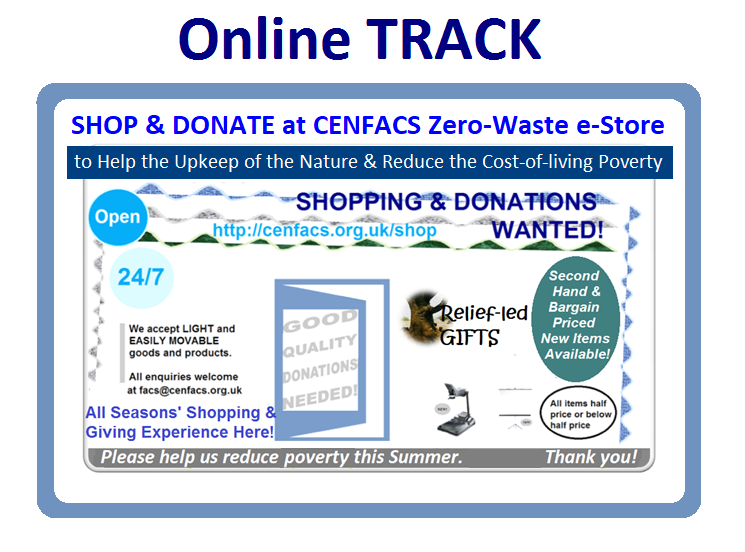
• Online TRACK to CENFACS Zero-Waste e-charity Summer Shop for Summer Goods Donations and Buys: Turn Your Waste into Relief for Others
Every season is an opportunity to do something about the environment and poverty.
You can recycle or donate your unwanted or unused goods and presents to do something about the environment and or poverty.
You can also buy goods to meet the same ends.
This Summer you can online track CENFACS e-charity shop to help the environment and poverty relief. You can turn your waste into relief for those in need.
If you are a fun of online tracking and shopping, you can take an online course of action or online path or even course of travel to save the environment and reduce poverty with CENFACS.
Instead of you in-person going to physically shop or donate your goods, you can from the comfort of your home buy or donate goods to CENFACS e-charity shop to help the beautiful and noble cause of poverty relief and sustainable development.
To support us either by shopping or supplying us with products or goods you no longer want or use so that we can sell and raise the money for the beautiful cause of poverty relief, please go to http://cenfacs.org.uk/shop/
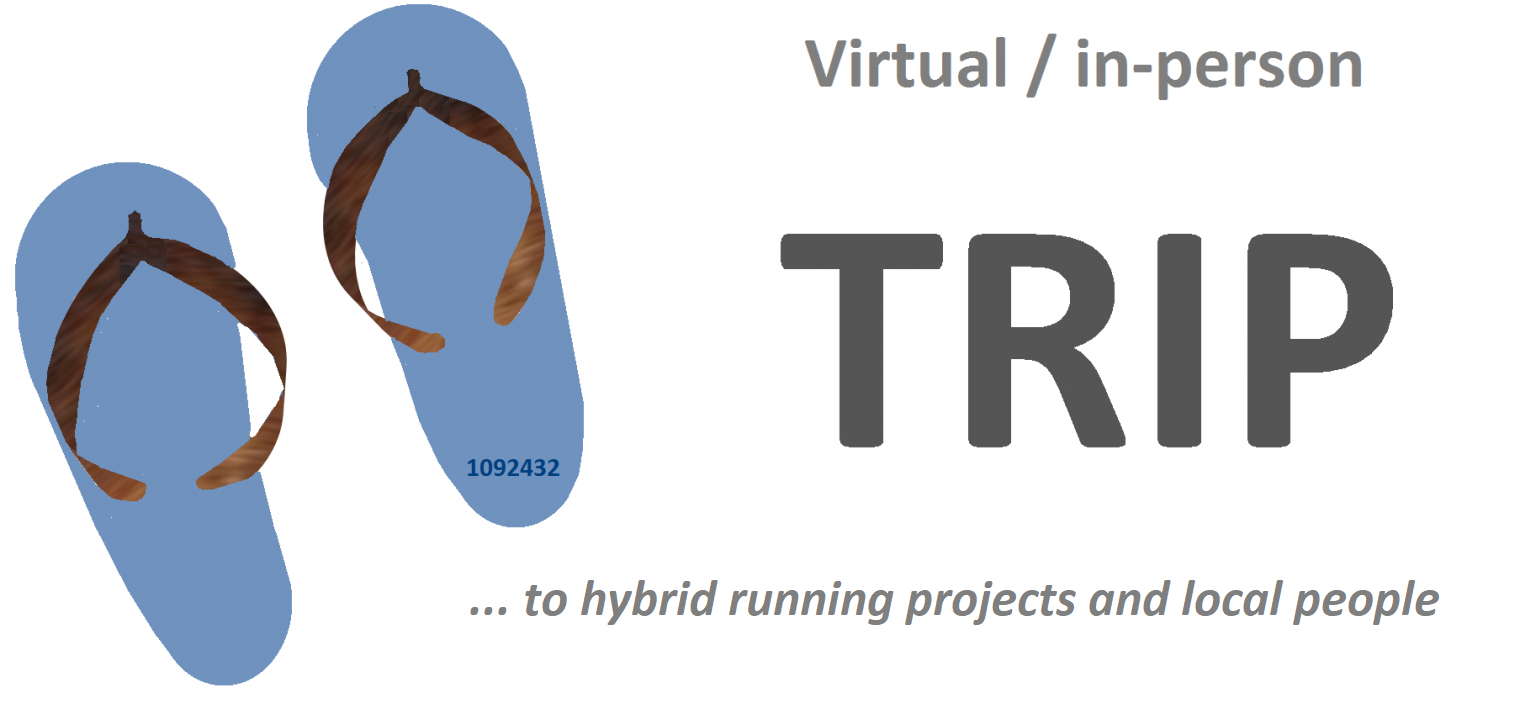
• Virtual and In-person Trips for Fieldwork Research
Trips to the local need this week include as well those travels made or to be made to conduct fieldwork research in Africa and anywhere else in the context of poverty relief and sustainable development projects.
We recommend to those who want do trips for fieldwork research to take extra care in terms of health and safety. Where health risks are nullified or minor, people can in-person visit local projects and those running them. These trips can also be done virtually.
When in-person visiting projects and people, it is in the interest of everybody that they should take care of the following:
√ They have to be fully vaccinated and or negatively tested against any diseases that may threaten them
√ They should wear appropriate personal protective equipment to protect themselves and others against the coronavirus if the latter is still a major threat to health where they go
√ They should follow local, national and international rules related to the protection against any threatening disease or epidemic symptoms.
These fieldwork researches or practical experiences to gain knowledge and skills could be of varying forms such as observation and collection of raw data, interviews, focus group discussions, practical activities to support overseas development projects, etc.
If you are a researcher and did or are doing some fieldwork research on sustainable development and poverty reduction, and think that your work can enhance CENFACS’ work, you could share with us your experience, research findings or outcomes.
To share the experiences and results of your fieldwork research, just contact CENFACS and CENFACS will get back to you.
Message in French (Message en français)
• Inclusion du Dernier Carré d’Évasion ou d’Inévitabilité de la Pauvreté (Le Dernier Carré) dans le Programme d’Été du Bonheur, de la Santé et du Bien-être
Notre modèle en quatre étapes de soulagement de la pauvreté (c’est-à-dire le Dernier Carré de Soulagement de la Pauvreté ou Le Dernier Carré) est inclus dans certains des éléments du Programme d’Été du Bonheur, de la Santé et du Bien-être.
• • Le Dernier Carré Modèle ou le Dernier Carré de Lutte contre la Pauvreté ou le Carré d’Évasion et d’Inévitabilité de la Pauvreté
C’est le modèle en quatre dimensions de CENFACS travaillant ensemble avec les populations locales pour aider à réduire parmi elles quatre types de pauvreté respectivement liés aux éléments suivants : le revenu, la consommation, l’énergie et l’emploi. À travers ce modèle théorique, il est possible de savoir si un individu a atteint les quatre types de pauvreté, qui sont : la pauvreté du revenu, la pauvreté de consommation, la pauvreté en énergie et la pauvreté au travail. Pour ce faire, nous utilisons les indicateurs appropriés relatifs à chacun de ces types comme suit.
Pour la pauvreté monétaire, nous utiliserions une mesure de la pauvreté basée sur le revenu, comme le total des ressources disponibles tel que défini par la Social Metrics Commission (13). Nous allons nous référer aux indicateurs sociaux et économiques des ressources totales disponibles par semaine, en particulier les indicateurs des coûts familiaux inévitables, tels que fournis par la Social Metrics Commission (op. cit.) qui expliquent que ces indicateurs incluent :
« les coûts de logement récurrents, les coûts de garde d’enfants, le coût supplémentaire du handicap, les coûts de soins sociaux, d’autres [autres coûts] qui nécessitent plus de recherches/peuvent s’appliquer dans différents pays (par exemple : frais de déplacement au travail, énergie, soins de santé) » (p. 20).
En ce qui concerne la pauvreté alimentaire, nous appellerons cela le seuil de pauvreté alimentaire, qui est défini par ‘devinit.org’ (14) comme “le coût d’un panier de nourriture avec un apport nutritionnel minimal recommandé”. Cette métrique peut être utilisée pour quantifier la pauvreté de consommation.
Concernant la pauvreté énergétique, nous allons nous tourner vers le seuil de pauvreté énergétique, qui est “la sensibilité de l’énergie par rapport au revenu des ménages comme indicateur pour identifier la pauvreté énergétique”, selon Lu Jiang et al. (15).
En ce qui concerne la pauvreté au travail, nous considérerons « le revenu disponible équivalisé des ménages inférieur à 60 % de la médiane nationale des ménages », comme le précise Abigail McKnight et al (16).
Toutes ces mesures quantitatives seront impliquées dans la théorie du dernier carré de l’allègement de la pauvreté et aideront à déterminer une pauvreté à quatre dimensions. Nous pouvons également nous référer à l’indice du fossé de pauvreté au carré ; dans ce cas, nous pouvons évaluer la profondeur et la gravité de la pauvreté, en priorisant en particulier les plus pauvres au sein de notre communauté.
• • Inclusion du Carré d’Évasion ou d’Inévitabilité de la Pauvreté dans le Programme d’été du Bonheur, de la Santé et du Bien-être
Nous pouvons faire un dernier effort pour atteindre les membres de notre communauté qui ont du mal à accéder aux besoins fondamentaux et aux opportunités de profiter d’un été heureux, sain et agréable. Nous pouvons travailler avec eux pour traiter les formes les plus sévères de pauvreté monétaire, de pauvreté énergétique, de pauvreté de consommation et de pauvreté au travail grâce à l’application de la théorie du dernier carré de secours contre la pauvreté.
Dans le contexte du bonheur, de la santé et du bien-être ; le modèle nous aidera à établir s’il existe des options pour trouver le bonheur, la santé et le bien-être, ainsi que comment éliminer les barrières à ceux-ci.
Ceux ou celles qui souhaiteraient travailler avec le CENFACS pour réduire les types de pauvreté rendant le dernier carré de l’allègement de la pauvreté, ne devraient pas hésiter à contacter le CENFACS.
Main Development
• FACS Issue No. 88, Summer 2025: African Charities and Alternative Funding Sources to International Aid Cuts
The contents and key summaries of the 88th Issue of FACS are given below.
• • Contents and Pages
I. Key Terms Relating to the 88th Issue of FACS (Page 2)
II. Theories Used in the 88th Issue of FACS (Page 2)
II. Strategies for Alternative Funding Sources (Page 3)
III. African Charities and Corporate Social Responsibility Programmes (Page 3)
IV. African Charities, Philanthropic Foundations and Major Donors to Poverty Reduction (Page 4)
V. African Charities and Leadership Programme for Fundraising Skills Development (Page 4)
VI. Charités Africaines et leurs Campagnes pour Recueillir des Dons Privés (Page 5)
VII. Charités Africaines et Solutions Locales face aux Réductions d’Aide Internationale (Page 5)
VIII. Charités Africaines et Partenariats de Charité-privée pour la Réduction de la Pauvreté (Page 6)
IX. Charités Africaines et Modèles d’Entreprises Sociales (Page 6)
X. Survey, Testing Hypotheses, E-questionnaire and E-discussion on Alternative Funding Sources (Page 7)
XI. Support, Tool and Metrics, Information and Guidance on Alternative Funding Sources (Page 8)
XII. Workshop, Focus Group and Booster Activity about African Charites’ Work on Alternative Funding Sources (Page 9)
XIII. Giving and Project (Page 10)
• • Key Summaries
Please find below the key summaries relating to the 88th Issue of FACS from page 2 to page 10.
• • • Key Terms Relating to the 88th Issue of FACS (Page 2)
There are three terms used in the context of this Issue of FACS. These terms are African charities, alternative funding sources, and international aid. Let us briefly explain these key terms.
• • • • African charities
To explain African charities, let us first clarify the word ‘charity’. Our explanation of this word comes from ‘howcharitieswork.com’ (17) which provides three statements, which are:
“a) A charity’s aims have to fall into categories that the law says are charitable
b) It has to be established exclusively for what is known as public benefit
c) Charities can’t make profits (that is; all the money they raise has to go towards achieving their aims; a charity can’t have owners or shareholders who benefit from it)”.
The term African charities relate to charities from Africa. We presume that our African counterpart charities would share the above-mentioned rules for charity. We also assume that the law in African countries would classify the African charities we are talking about as charitable as it is in the UK.
• • • • Alternative funding sources
Alternative funding sources can be defined in many ways. One of its definitions found within the funding literature is from ‘advancery.io’ (op. cit.) which argues that
“Alternative funding refers to non-traditional methods of obtaining capital or financing for businesses and enterprises”.
Another definition comes from the Funding Family (18) which speaks about alternative funding options that offer innovative way to secure financial support beyond traditional avenues. These options are crowdfunding campaigns, peer-to-peer lending, Angel investors, grants and competitions, bartering and collaborations.
These definitions can be extended to include alternative funding sources sought by charities and voluntary sector organisations. In the case of African Charities, it will be about using non-traditional methods to obtain their capital or funding to continue to run and extend their mission in the era of international aid cuts and of the exploration of routes to financial self-sustainability.
• • • • International aid
The 88th Issue uses the definition of ‘developmentaid.org’ (op. cit.) which is
“International aid (also known as overseas aid or foreign aid) is the assistance from rich and developed states that is given to developing countries. The donors may be governments, non-governmental organisations, development banks, or various international organisations”.
Still according to ‘developmentaid.org’, the help they provide is channelled for a variety of reasons be they moral, philanthropic, political, or economic. Aid is provided in multiple forms, from loans and grants to donations of agricultural equipment.
The above-named three key terms shape the contents of the 88th Issue of FACS.
• • • Theories Used in the 88th Issue of FACS (Page 2)
The 88th Issue focuses on the theory of alternative funding sources in the context of African Charities and good causes in Africa. In particular, the 88th Issue draws from the principles of dependency theory which recognises the influence of external factors on organisational behaviour. The 88th Issue as well refers to the alternative-based funding model as proposed by Azzarina Zakaria and Nurliana Zahira Zaharrudin (op. cit.). In this respect, the 88th Issue uses alternative-based funding models and resource dependency theory.
Besides the above-mentioned theories, the 88th Issue considers the Charitable Triad Theory (19), which explains how donors, beneficiaries and fundraisers influence charitable giving. Likewise, it refers to alternative funding models. One of these models is being given by ‘ssir.org’ (20), which provides 10 funding models for nonprofit comprising of heartfelt connector, beneficiary builder, member motivator, big bettor, public provider, policy innovator, beneficiary broker, resource recycler, market maker, and local nationalizer.
• • • Strategies for Alternative Funding Sources (Page 3)
To remain mission-driven, African Charities can explore funding sources and business models to mitigate the impact of international aid cuts. These include diversifying funding through local philanthropy, social impact investments, diaspora direct contributions, regional and non-western donors, and social enterprises. However, as getfullyfunded.com’ (21) puts it
“Diversifying nonprofit funding is not about abandoning traditional giving models – It is about expanding what is possible”.
African Charities can as well strengthen their domestic resource mobilisation by engaging local philanthropists and seeking community contributions. Their strategies for alternative funding sources can also involve the enhancement of their efficiency and sustainability through capacity building, monitoring and evaluation, and south-south cooperation with organisations having aims similar or complementary to theirs in the South.
• • • African Charities and Corporate Social Responsibility Programmes (Page 3)
Corporate Social Responsibility (CSR) involves an organisation’s efforts to enhance the quality of life of its employees and their families, improve business-community relations, address diversity issues and environmental issues (e.g., producing environmentally-friendly products, reducing waste, recycling) and improve product quality.
African Charities can work with organisations that adhere to CSR programmes to finance community-based projects. They can engage in partnership with corporations. They can align CSR goals with their mission. Working together will help to enhance the quality of employees and families, especially the poor ones who could also be beneficiaries or users of African Charities’ services.
The metrics for evaluating these partnerships will include the amount of funding received, the impact of joint ventures or initiatives and the alignment of CSR goals with African Charities’ mission.
• • • African Charities, Philanthropic Foundations and Major Donors to Poverty Reduction (Page 4)
Philanthropic foundations (like Ford Foundation, Oxfam, etc.) provide financial resources and support to various initiatives aimed at addressing the root causes and consequences of poverty. These foundations fund programmes focused on education, healthcare, economic development, and social service, often targeting vulnerable populations and communities.
They support organisations that cater for direct service provision, education and skills development, economic empowerment, healthcare and well-being, social justice and advocacy, public advocacy, etc. African Charities working in the areas of interest of these philanthropic foundations and that can meet their funding criteria can apply for funding to them. This also applies to major donors who can fund similar initiatives.
• • • African Charities and Leadership Programme for Fundraising Skills (Page 4)
Several programmes exist to enhance fundraising skills for African Charities and their leaders. These include the Africa Impact Fundraising (AIF) Grant Programme, the ARET Towards Leadership Programme, and the Programme for African Leadership (PfAL) at London School of Economics and Political Science. These programmes offer training, mentorship, and networking opportunities to help African Charities and their leaders secure funding, effectively manage teams, and build sustainable fundraising strategies.
Other programmes include Initiative to Develop African Research Leaders (IDeAL), Management for Fundraisers Training course offered by Get Grant, Global Perspective on Nonprofit Governance and Leadership Training.
All the above-mentioned initiatives can help one way or another to deal with the problem of finding alternative funding sources to mitigate the adverse impact of international aid cuts or just to function as an organisation.
• • • Charités Africaines et leurs Campagnes pour Recueillir des Dons Privés (Page 5)
Les organisations caritatives africaines se concentrent de plus en plus sur la collecte de dons privés à travers diverses campagnes. Elles utilisent souvent des plateformes en ligne telles que le financement participatif et les services de SMS pour donner, tout en engageant des individus et des organisations dans des événements et des défis de collecte de fonds.
Des exemples de cette campagne de collecte de fonds incluent les suivants :
Pour les plateformes de collecte de fonds en ligne, elles utilisent le financement participatif (par exemple, GogetFunding et BackaBuddy) et les services de SMS pour donner (par exemple, le service Donr);
Pour mobiliser les individus et les organisations, ils organisent des événements de collecte de fonds (comme des marathons, des ventes de gâteaux et des défis sponsorisés via African Adventures), établissent des partenariats avec des entreprises (via du sponsoring et des dons d’entreprises), et demandent à leurs membres de créer des pages de collecte de fonds individuelles pour soutenir leurs causes.
• • • Charités Africaines et Solutions Locales face aux Réductions d’Aide Internationale (Page 5)
Les Charités Africaines ou ONG africaines travaillent à l’autonomisation des communautés pour qu’elles dirigent les efforts de développement et humanitaires dans leurs propres contextes. Ce faisant, elles reconnaissent l’importance de la connaissance locale, de l’appropriation et de la durabilité pour obtenir des résultats positifs durables, tout en admettant les limites des solutions imposées de l’extérieur.
En se concentrant sur des solutions portées localement, cette approche aidera à améliorer la conception des programmes, à renforcer la responsabilité, à accroître la résilience, à réduire les coûts indirects et à favoriser le développement à long terme.
• • • Charités Africaines et Partenariats de Charité-privée pour la Réduction de la Pauvreté (Page 6)
Les Charités Africaines ou ONG africaines peuvent collaborer avec des entreprises (du secteur privé) pour atteindre des objectifs communs et créer un impact social positif. Ces partenariats peuvent prendre diverses formes, telles que le financement par les employés, le marketing lié à une cause ou des alliances stratégiques axées sur des problèmes spécifiques. Il y a des avantages pour les deux partenaires.
Pour les Charités Africaines ou ONG africaines, de tels partenariats aident à augmenter le financement, à améliorer la visibilité et la portée, à ouvrir l’accès à l’expertise et aux ressources, à offrir des opportunités d’engagement et de bénévolat des employés, à donner accès à de nouveaux marchés et usagers/bénéficiaires, et à fournir une association de marque positive.
Les avantages pour les entreprises incluent une image et une réputation de marque améliorées, un moral et un engagement des employés accrus, des opportunités de marketing et de relations publiques, ainsi qu’un accès à de nouveaux marchés et clients.
• • • Charités Africaines et Modèles d’Entreprises Sociales (Page 6)
Les œuvres de charité africaines peuvent choisir de mettre en place des entreprises sociales caritatives si leurs documents de gouvernance et les lois des pays africains où elles sont établies ou opèrent leur permettent d’avoir un modèle hybride. Un tel modèle hybride combinerait des éléments à la fois des œuvres de charité et des entreprises sociales.
Les aspects des œuvres de charité incluront le recours aux dons, aux subventions et à la collecte de fonds pour atteindre leur mission ; tandis que les aspects des entreprises sociales les aideront à générer des revenus grâce à la vente de biens et de services, en réinvestissant les bénéfices pour faire avancer leur mission sociale. Elles peuvent générer des revenus par le biais d’entreprises sociales ou en facturant des services. Les indicateurs pour évaluer ces modèles incluent les revenus générés, les taux de récupération des coûts et l’impact sur les activités liées à la mission.
En essence, si les œuvres de charité africaines choisissent un modèle hybride, elles maximiseront toujours le bien social tout en restant financièrement durables. En d’autres termes, elles compteront sur un financement caritatif, tout en générant des revenus grâce à des activités commerciales.

• • • Survey, Testing Hypotheses, E-questionnaire and E-discussion on Alternative Funding Sources (Page 7)
• • • • Survey on the effectiveness of alternative funding streams
The survey is on how effective alternative funding sources will be on your growth plans.
The purpose of this survey is to collect information from a sample of our Africa-based Sister Organisations and community members regarding their perception on this effectiveness.
Participation to this survey is voluntary.
As part of the survey, we are running a questionnaire which contains some questions. One of these questions is:
Q: Will you defer your growth plans if you were unable to get alternative funding through traditional funding routes?
You can respond and directly send your answer to CENFACS.
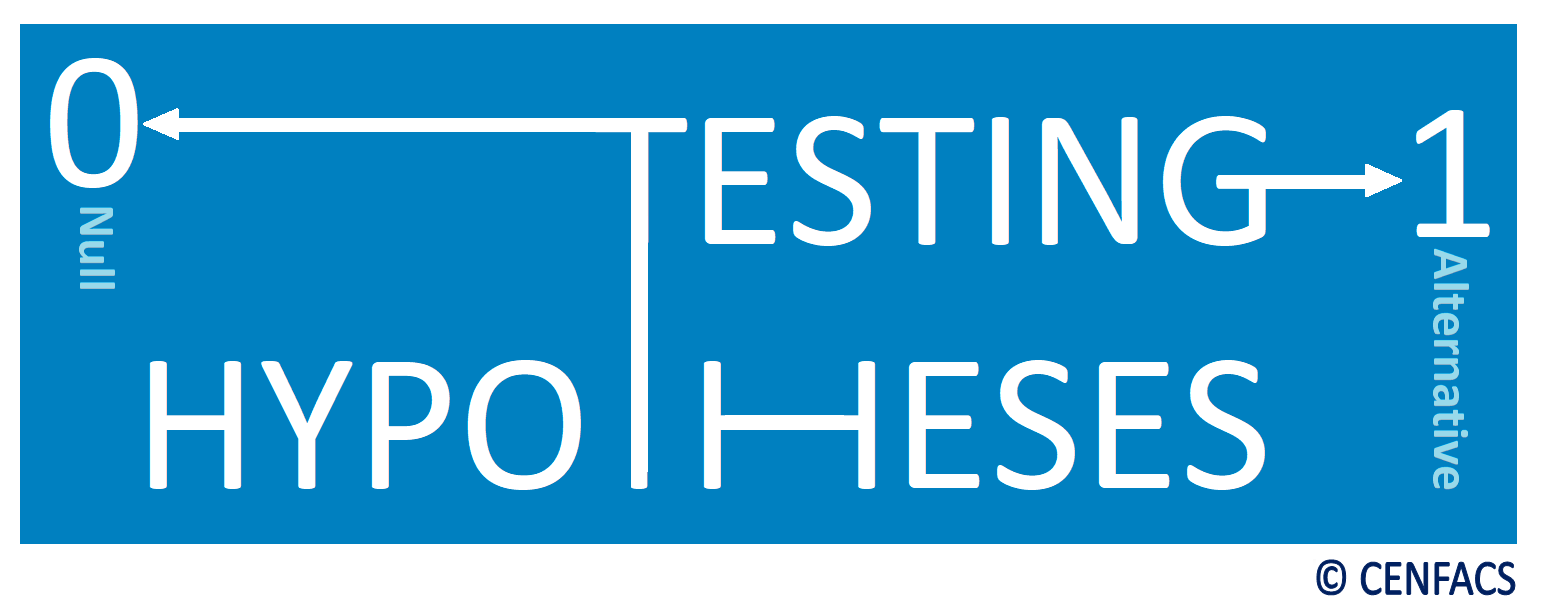
• • • • Testing hypotheses about alternative funding streams
Although it is not necessary to state hypotheses in a grant application, it is possible to test hypotheses about alternative funding sources. For those of our members who would like to dive deep into hypotheses surrounding alternative funding streams, they can test the inference of the following hypotheses:
a.1) Null hypothesis (Ho): Alternative funding does reinforce funder’s ideology
a.2) Alternative hypothesis (H1): Alternative funding does not reinforce funder’s ideology
b.1) Null hypothesis (Ho): Alternative funding is less conditional (that is, less contingent on recipients to meet certain criteria)
b.2) Alternative hypothesis (H1): Alternative funding is not less conditional.
The above tests are for those of our members who would like to dive deep into alternative funding sources and funder’s ideology or conditionality. In order to conduct these tests, one needs data.
• • • • E-question on your view about international aid and dependency
Cuts in international aid have raised a number of questions. One of these questions is:
Q: Do international aid cuts provide an opportunity for African Charities and NGOs to regain their independence?
Any of our readers and users can answer the above-mentioned question. You can provide your answer directly to CENFACS.
For those answering any of this question and needing first to discuss the matter, they can contact CENFACS.
• • • • E-discussion on localised funding model
The e-discussion is on how localisation of funding can help African Charities to regain autonomy and avoid the problems associated with donor-driven agendas.
For those of our members who may have any views or thoughts or even experience to share with regard to this matter, they can join our e-discussion to exchange their views or thoughts or experience with others.
To e-discuss with us and others, please contact CENFACS.
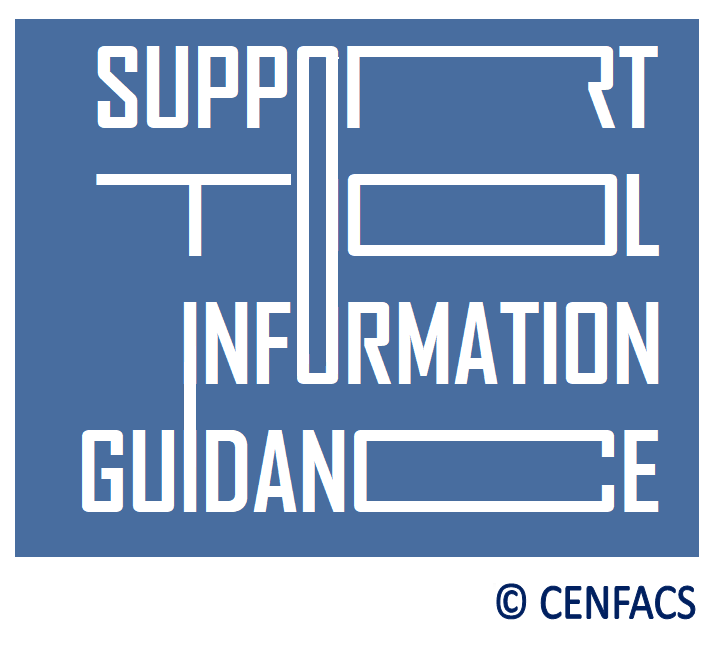
• • • Support, Tool and Metrics, Information and Guidance on Alternative Funding Sources (Page 8)
• • • • Ask CENFACS for Guidance regarding Alternative Funding Sources
Those who are looking for new sources of support or need some guidance regarding alternative funding sources, CENFACS can guide them on alternative funding models, like crowdfunding.
The above-mentioned areas of guidance can also be done through capacity building, advocacy, advice, networking, signposting, etc. run by CENFACS.
For those African Charities, especially CENFACS‘ Africa-based Sister Organisations, that are looking for guidance or direction for alternative funding streams (such as corporate partnerships, social enterprises, etc.), CENFACS is prepared to work with them on this matter.
CENFACS can work with them to explore ways of aligning their mission with the goals of alternative funding streams.
We can work with them under our International Advice-, Guidance- and Information-giving Service. We can as well signpost them to organisations working on Alternative Funding Sources.
Need advice, guidance and information; please contact CENFACS for support.
• • • • Tools and metrics of the 88th Issue of FACS
Alternative funding tools and metrics encompass various innovative strategies and indicators used to evaluate funding sources beyond traditional methods, enhancing financial resilience and impact measurement.
The tool we are interested in is Crowdfunding.
It is the most popular topic. According to ‘startuogurulab.com’ (22),
“Crowdfunding has popularity as a way to raise funds from a large number of people, especially via online platforms”.
The ‘startupgurulab.com’ explains that metrics for crowding success includes total funds raised, number of backers, campaign engagement rates and the average contribution per backer. These are the metrics that we are going to use as they help provide new revenue streams and foster deeper engagement with donors and stakeholders.
• • • • Information and guidance on alternative funding sources for charities in Africa
Information and Guidance include two types areas of support via CENFACS, which are:
a) Information and guidance on alternative funding sources for charities in Africa
b) Signposts to improve Users’ Experience about alternative funding sources
• • • • • Information and guidance on alternative funding sources for charities in Africa
The following websites provide/list some funding sources:
∝) https://blog.moni.africa/uncategorised/top-grants-and-funding-opportunities-for-african-non-profits-and-ngos/: provides a roundup of top grants and funding opportunities that African non-profits and NGOs can explore
∝) https://www.resource.dnsafrica.org/2025/01/20/10-major-donors-for-ngos-in-africa-fundsforngos/: lists 10 major donors for NGOs in Africa – Funds for NGOs
∝) https://www.gofundme.com/en-gb/c/start?utm_source: helps fundraisers to succeed in their fundraising platform
∝) https://npifund.com: lists foundations that provide small grants to NGOs
∝) https://todayafrica.co/international-grants-for-african-countries: gives international grants for African countries
∝) https://www.developmentaid.org/news-stream/post/192040/donor-alternatives-to-usaid: names 10 donor alternatives to USAID with open grant calls
∝) https://www.advance-africa.com/Grants-for-NGOs-and-Organisations.html: summaries grants for NGOs and organisations in 2023
∝) https://naijaquest.com/international-funding-for-projects-in-africa/: provides a list of international funding for projects in Africa in 2024
∝) https://www.instrumentl.com/browse-grants/africa: has a database that enables to search for grant makers.
The above listing is about some of the websites that give information and guidance about alternative funding sources or options. It is not exhaustive and has to be used with other information on alternative funding sources.
Those Africa-based Sister Organisations (ASOs) that are looking for information and guidance on alternative funding and that do not know what to do, CENFACS can work with them (via needs assessment conducted under CENFACS’ International Advice Service) or provide them with leads about other organisations, institutions and services that can help them.
We can provide information and guidance to address alternative funding issues and support to ASOs to reduce poverty and address the problem caused by international aid cuts. Our information and guidance services will help them foster creativity, community engagement and opportunities for growth through funding sources diversification.
• • • • • Signposts to improve Users’ Experience about alternative funding sources
For those who are looking for whereabout to find help about alternative funding sources, we can direct them to the relevant services and organisations.
More tips and hints relating to the matter can be obtained from CENFACS‘ Advice-giving Service and Sessions.
Additionally, you can refer to above-mentioned list of organisations and services providing help and support in the area of alternative funding sources, although the Issue 88 lists only the few of them. If the organisations you are looking for are not on the above-named list, you ask CENFACS to find them. But, before making any request one needs to specify the kind of organisations and information they are looking for.
To make your request, just contact CENFACS with your name and contact details.

• • • Workshop, Focus Group and Booster Activity about Alternative Funding Sources (Page 9)
• • • • Mini themed workshop on alternative funding sources
It is a training or learning event that will explore alternative methods of funding your needs. The workshop will cover three main areas: how to identify and understand different types of alternative funding sources, how to find funding sources that match your needs, and how to apply for funding from alternative funding sources or funders.
The workshop aims at supporting those without or with less information and knowledge about alternative funding sources, including those who do not want to rely on traditional funding sources or conventional methods of obtaining funds. Those who need an in-depth alternative funding skills training assessment are also welcome. The workshop will provide recommendations for actions with options and opportunities for the participants.
Briefly, the workshop aims to educate participants about alternative funding sources and ways of accessing them.
To enquire about the workshop, please contact CENFACS.
• • • • Focus group on alternative funding sources
This is a qualitative research method to be used to explore and identify possible alternative funding sources for your project, as well as how to design a project that matches alternative funders’ criteria.
The focus group will bring together a small group of individuals (between 6 and 10) making the CENFACS Community to discuss their ideas, experiences, and perspectives on alternative funding sources
The focus group will help understand needs, inform policy, promote ownership, identify barriers, and test new ideas about alternative funding models.
To take part in the focus group, group that will use deliberative practice strategies, please contact CENFACS.
• • • • Booster activity: ‘Talking to Alternative Funding Advisers’
This user involvement activity revolves around the answers to the following question:
Q: Do you talk to an alternative funding advisor about issues relating to finding non-traditional or other ways of funding your needs or proposals?
Those who would like to answer this question and participate to our ‘Talking to Alternative Funding Advisor’ Activity, they are welcome.
To take part in this activity, please contact CENFACS.
• • • Giving and Project (Page 10)
• • • • Readers’ giving
You can support FACS, CENFACS bilingual newsletter, which explains what is happening within and around CENFACS.
FACS also provides a wealth of information, tips, tricks and hacks on how to reduce poverty and enhance sustainable development.
You can help to continue its publication and to reward efforts made in producing it.
To support, just contact CENFACS on this site.
• • • • Alternative Funding Software Project (AFSP)
AFSP is an idea to develop a software that provides information for African Charities looking for alternative funding sources. The main aim of this project is to reduce poverty due to the lack of targeted information for African Charities looking for alternative funding sources to realise or keep momentum of their mission.
The project will outline the main alternative funding options for African Charities and NGOs. It will also include information on private-charity partnerships, social enterprising as an alternative funding, social impact investing, locally-driven solutions to international aid cuts, etc.
To support or contribute to AFSP, please contact CENFACS.
For further details including the implementation plan of the AFSP, please contact CENFACS.
The full copy of the 88th Issue of FACS is available on request.
For any queries and comments about this Issue, please do not hesitate to contact CENFACS.
_________
• References
(1) https://advancery.io/alternative-funding (accessed in August 2025)
(2) Zakaria, A & Zaharrudin, N. Z., (2020), Alternative-based Funding Model and Resource Dependency Theory: Perspectives of Malaysian Non-Governmental Organisations in Malaysian Journal of Consumer and Family Economics Vol. 24 (S1), available at https://majcafe.com/wp-content/uploads/2022/11/vol-24-s1-Paper-8.pdf (accessed in Jun 2025)
(3) https://www.developmentaid.org/news-stream/post/141735/what-is-international-aid (accessed in June 2025)
(4) https://borgenporject.org/international-aid-care/ (accessed in June 2025)
(5) https://www.developmentaid.org/news-stream/post193535/africa-foreign-and-declining (accessed in June 2025)
(6) https://www.cgdev.org/blog/usaid-cuts-new-estimates-country-level (accessed in June 2025)
(7) https://www.theafricareport.com/380618/trumps-africa-aid-cuts-the-country-by-country-breakdown/ (accessed in June 2025)
(8) Kudrna, L. & Kushlev, K. (2022), Money Does Not Always Buy Happiness, but Are Richer People Less Happy in Their Daily Lives? It Depends on How You Analyse Income, available at https://www.frontiersin.org/journals/psychology/articles/10.3389/fpsyg.2022.883137/full (accessed in August 2024)
(9) https://www.health.org.uk/evidence-hub/money-and-resources/income/relationship-between-income-and-health (accessed in August 2024)
(10) https://www.healthaffairs.org/doi/10.1377/hlthaff.2022.00846 (accessed in August 2024)
(11) https://globalwellnessinstitute.org/what-is-wellness/ (accessed in July 2024)
(12) https://www.tutor2u.net/economics/reference/what-is-disposable-income (accessed in August 2023)
(13) https://socialmetricscommission.gov.uk/wp-content/upload/2020/06/Measuring-Poverty-2020-Web.pdf (accessed in February 2022)
(14) https://www.devinit.org/org/resources/food-poverty-global-regional-and-national/# (accessed in February 2022)
(15) Lu Jiang, Lu Yu, Bing Xue, Xing pen Chan, Zhifu Mi: Who is energy poor? Evidence from the least developed regions in China
(16) McKnight, A., Stewart, K., Himmelivert, S, & Palillo, M. (2016), Low Pay and In-work Poverty: Preventative Measures and Preventative Approaches, Evidence Review, May 2016
(17) https://howcharitieswork.com/about-charities/what-is-a-charity/ (accessed in October 2024)
(18) https://www.thefunding.com/blog/alternative-funding-options (accessed in August 2025)
(19) Chapman, C. M., Louis, W. R., Masser, B. M. & Thomas, E. F. (2022), Charitable Triad Theory: How Donors, Beneficiaries, and Fundraisers Influence Charitable Giving. Psychology & Marketing, 39, 1826-1848. https://doi.org/10.1002/mar.21701
(20) https://ssir.org/articles/entry/ten_nonprofit_finding_models (accessed in August 2025)
(21) https://getfullyfunded.com/alternative-funding-sources (accessed in August 2025)
(22) https://startuogurulab.com/alternative-startup-funding (accessed in August 2025)
_________
• Help CENFACS Keep the Poverty Relief Work Going This Year
We do our work on a very small budget and on a voluntary basis. Making a donation will show us you value our work and support CENFACS’ work, which is currently offered as a free service.
One could also consider a recurring donation to CENFACS in the future.
Additionally, we would like to inform you that planned gifting is always an option for giving at CENFACS. Likewise, CENFACS accepts matching gifts from companies running a gift-matching programme.
Donate to support CENFACS!
FOR ONLY £1, YOU CAN SUPPORT CENFACS AND CENFACS’ NOBLE AND BEAUTIFUL CAUSES OF POVERTY REDUCTION.
JUST GO TO: Support Causes – (cenfacs.org.uk)
Thank you for visiting CENFACS website and reading this post.
Thank you as well to those who made or make comments about our weekly posts.
We look forward to receiving your regular visits and continuing support until the end of 2025 and beyond.
With many thanks.

